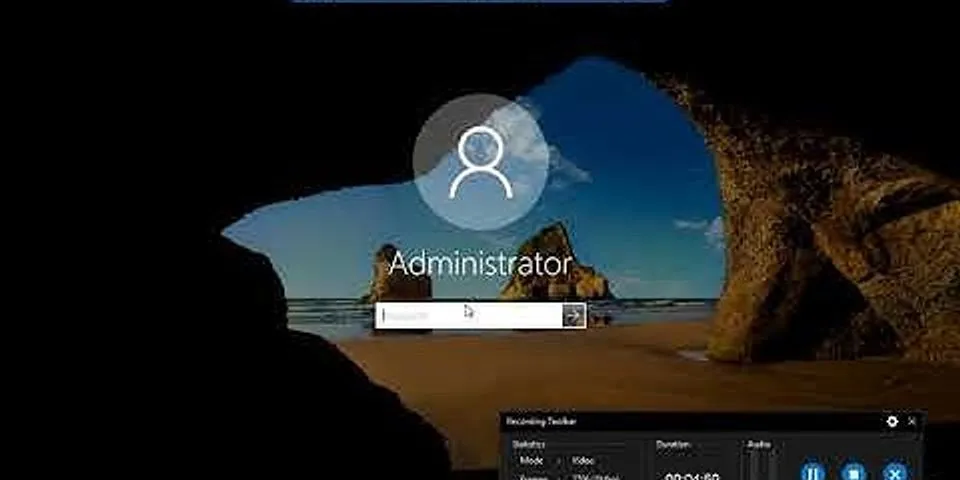Before continuing, refer Introduction to Access Control Lists lesson , if you are not familiar with Access Contol Lists. Refer Standard Access Control Lists lesson if you are not familiar not familiar with Standard Access Control configuration IOS commands. Standard Access Control Lists (ACLs) - Lab PracticeThe following diagram shows our Standard Access Control Lists lab setup. We have three routers, three switches, six workstations and three servers connected as below. The host names, IP addresses and the interfaces of the routers are shown in diagram. The IP addresses of the workstations and the servers are also shown in the diagram. Here is a small topology in which there are 3 departments namely sales, finance, and marketing. The sales department has a network of 172.16.40.0/24, the Finance department has a network of 172.16.50.0/24, and the marketing department has a network of 172.16.60.0/24. Now, want to deny connection from the sales department to the finance department and allow others to reach that network. Now, first configuring numbered standard access – list for denying any IP connection from sales to finance department.
R1# config terminal
R1(config)# access-list 10 deny 172.16.40.0 0.0.0.255Here, like extended access-list, you cannot specify the particular IP traffic to be permitted or denied. Also, note that wildcard mask has been used (0.0.0.255 which means Subnet mask 255.255.255.0). 10 is used from the number standard access-list range.
R1(config)# access-list 110 permit ip any anyNow, as you already know there is an implicit deny at the end of every access list which means that if the traffic doesn’t match any of the rules of the access list then the traffic will be dropped.
By specifying any means that source having any IP address traffic will reach the finance department except the traffic which it matches the above rules that you have made. Now, you have to apply the access list on the interface of the router:
R1(config)# int fa0/1
R1(config-if)# ip access-group 10 outAs you remember that the standard access-list is generally applied to the destination and here also if you apply access-list close to the destination, it will satisfy our need, therefore, outbound to interface fa0/1 has been applied. Named standard Access-list example – Now, considering the same topology, you will make a named standard access list.
R1(config)# ip access-list standard blockaclBy using this command you have made an access-list named blockacl.
R1(config-std-nacl)# deny 172.16.40.0 0.0.0.255
R1(config-std-nacl)# permit anyAnd then the same configuration you have done in numbered access-list.
R1(config)# int fa0/1
R1(config-if)# ip access-group blockacl outStandard access-list for Telnet example –
As you know, you cannot specify particular IP traffic to be denied in standard access-list but telnet connection can be permitted or denied using standard access-list by applying access-list on line vty lines. Here, in the given figure, you want to deny telnet to the Finance department from any network. Configuring for the same:
R1(config)# access-list 10 deny any
R1(config)# line vty 0 4
R1(config-line)# access-class 10 out
Article Tags :
Computer Networks
Practice Tags : Computer Networks
Understanding Access Control ListsAccess Control Lists (ACLs) are a collection of permit and deny conditions, called rules, that provide security by blocking unauthorized users and allowing authorized users to access specific resources. ACLs can also provide traffic flow control, restrict contents of routing updates, and decide which types of traffic are forwarded or blocked. Normally ACLs reside in a firewall router or in a router connecting two internal networks. You can set up ACLs to control traffic at Layer 2, Layer 3, or Layer 4. MAC ACLs operate on Layer 2. IP ACLs operate on Layers 3 and 4. FeaturesACL support features include Flow-based Mirroring and ACL Logging. - Flow-based mirroring is the ability to mirror traffic that matches a permit rule to a specific physical port or LAG. Flow-based mirroring is similar to the redirect function, except that in flow-based mirroring a copy of the permitted traffic is delivered to the mirror interface while the packet itself is forwarded normally through the device. You cannot configure a given ACL rule with mirror and redirect attributes.
- ACL Logging provides a means for counting the number of “hits” against an ACL rule. When you configure ACL Logging, you augment the ACL deny rule specification with a ‘log’ parameter that enables hardware hit count collection and reporting. FASTPATH uses a fixed five minute logging interval, at which time trap log entries are written for each ACL logging rule that accumulated a non-zero hit count during that interval. You cannot configure the logging interval.
Using ACLs to mirror traffic is called flow-based mirroring because the traffic flow is defined by the ACL classification rules. This is in contrast to port mirroring, where all traffic encountered on a specific interface is replicated on another interface. LimitationsThe following limitations apply to ACLs. These limitations are platform dependent. - Maximum of 100 ACLs.
- Maximum rules per ACL is 8-10.
- The system supports ACLs set up for inbound traffic only.
- You can configure mirror or redirect attributes for a given ACL rule, but not both.
- The system does not support MAC ACLs and IP ACLs on the same interface.
- A hardware platform may support a limited number of counter resources, so it may not be possible to log every ACL rule. You can define an ACL with any number of logging rules, but the number of rules that are actually logged cannot be determined until the ACL is applied to an interface. Furthermore, hardware counters that become available after an ACL is applied are not retroactively assigned to rules that were unable to be logged (the ACL must be un-applied then re-applied). Rules that are unable to be logged are still active in the ACL for purposes of permitting or denying a matching packet.
- The order of the rules is important: when a packet matches multiple rules, the first rule takes precedence. Also, once you define an ACL for a given port, all traffic not specifically permitted by the ACL is denied access.
MAC ACLsMAC ACLs are Layer 2 ACLs. You can configure the rules to inspect the following fields of a packet (limited by platform): - Source MAC address
- Source MAC mask
- Destination MAC address
- Destination MAC mask
- VLAN ID
- Class of Service (CoS) (802.1p)
- Ethertype
L2 ACLs can apply to one or more interfaces. Multiple access lists can be applied to a single interface - sequence number determines the order of execution. You can assign packets to queues using the assign queue option. IP ACLsIP ACLs classify for Layers 3 and 4. Each ACL is a set of up to ten rules applied to inbound traffic. Each rule specifies whether the contents of a given field should be used to permit or deny access to the network, and may apply to one or more of the following fields within a packet: - Destination IP with wildcard mask
- Destination L4 Port
- Every Packet
- IP DSCP
- IP Precedence
- IP TOS
- Protocol
- Source IP with wildcard mask
- Source L4 port
- Destination Layer 4 port
1. Create a MAC ACL by specifying a name. 2. Create an IP ACL by specifying a number. 3. Add new rules to the ACL. 4. Configure the match criteria for the rules. 5. Apply the ACL to one or more interfaces. Setting Up an IP ACL via CLIThe script in this section shows you how to set up an IP ACL with two rules, one applicable to TCP traffic and one to UDP traffic. The content of the two rules is the same. TCP and UDP packets will only be accepted by the Sun Netra CP3240 switch if the source and destination stations have IP addresses that fall within the defined sets. FIGURE 22-1 IP ACL Example Network Diagram
Example 1: Create ACL 179 and Define an ACL RuleAfter the mask has been applied, it permits packets carrying TCP traffic that matches the specified Source IP address, and sends these packets to the specified Destination IP address.
| config
access-list 179 permit tcp 192.168.77.0 0.0.0.255 192.168.77.3 0.0.0.0
|
Example 2: Define the Second Rule for ACL 179Define the rule to set similar conditions for UDP traffic as for TCP traffic.
| access-list 179 permit udp 192.168.77.0 0.0.0.255 192.168.77.3 0.0.0.255
exit
|
Example 3: Apply the rule to Inbound Traffic on Port 1/0/2Only traffic matching the criteria will be accepted.
| interface 0/2
ip access-group 179 in
exit
|
Setting Up a MAC ACL via CLIThe following are examples of the commands used for the MAC ACLs feature. Example 1: Set up a MAC Access List
CODE EXAMPLE 22-1 Set Up a MAC Access Label
| (DTI SWITCH) (Config)#mac access-list ?
extended Configure extended MAC Access List parameters.
LVL7 FASTPATH Routing) (Config)#mac access-list extended ?
Enter access-list name up to 31 characters in length.rename Rename MAC Access Control List.
(DTI SWITCH) (Config)#mac access-list extended mac1 ?
Press Enter to execute the command.
(DTI SWITCH) (Config)#mac access-list extended mac1
|
Example 2: Specify MAC ACL Attributes
CODE EXAMPLE 22-2 Specify MAC ACL Attributes
| (DTI SWITCH) (Config)#mac access-list extended mac1
(DTI SWITCH) (Config-mac-access-list)#deny ?
Enter a MAC Address.
any Configure a match condition for all the source MAC
addresses in the Source MAC Address field.
(DTI SWITCH) (Config-mac-access-list)#deny any ?
Enter a MAC Address.
any Configure a match condition for all the destination
MAC addresses in the Destination MAC Address field.
bpdu Match on any BPDU destination MAC Address.
(DTI SWITCH) (Config-mac-access-list)#deny any 00:11:22:33:44:55 ?
Enter a MAC Address bit mask.
(DTI SWITCH) (Config-mac-access-list)#deny any 00:11:22:33:44:55 00
:00:00:00:FF:FF ?
Enter one of the following keywords to specify an
Ethertype (appletalk, arp, ibmsna, ipv4, ipv6, ipx,
mplsmcast, mplsucast, netbios, novell, pppoe, rarp).
<0x0600-0xffff> Enter a four-digit hexadecimal number in the range of
0x0600 to 0xffff to specify a custom Ethertype value.
vlan Configure a match condition based on a VLAN ID.
cos Configure a match condition based on a COS value.
log Configure logging for this access list rule.
assign-queue Configure the Queue Id assignment attribute.
Press Enter to execute the command.
(DTI SWITCH) (Config-mac-access-list)#deny any 00:11:22:33:44:55 00
:00:00:00:FF:FF log ?
assign-queue Configure the Queue Id assignment attribute.
Press Enter to execute the command.
(DTI SWITCH) (Config-mac-access-list)#deny any 00:11:22:33:44:55 00:0
0:00:00:FF:FF log
(DTI SWITCH) (Config-mac-access-list)#exit
(DTI SWITCH) (Config)#exit
(DTI SWITCH) #
|
Example 3: Configure MAC Access Group
CODE EXAMPLE 22-3 Configure MAC Access Group
| (DTI SWITCH) (Config)#interface 0/5
(DTI SWITCH) (Interface 0/5)#mac ?
access-group Attach MAC Access List to Interface.
(DTI SWITCH) (Interface 0/5)#mac access-group ?
Enter name of MAC Access Control List.
(DTI SWITCH) (Interface 0/5)#mac access-group mac1 ?
in Enter the direction .
(DTI SWITCH) (Interface 0/5)#mac access-group mac1 in ?
Press Enter to execute the command.
<1-4294967295> Enter the sequence number (greater than 0) to rank direction. A lower sequence number has higher precedence.
(DTI SWITCH) (Interface 0/5)#mac access-group mac1 in 6 ?
Press Enter to execute the command.
(DTI SWITCH) (Interface 0/5)#mac access-group mac1 in 6
(DTI SWITCH) (Interface 0/5)#exit
(DTI SWITCH) (Config)#exit
(DTI SWITCH) #
|
Example 4: Set up an ACL with Permit Action
CODE EXAMPLE 22-4 Set Up ACL with Permit Action
| (DTI SWITCH) (Config)#mac access-list extended mac2
(DTI SWITCH) (Config-mac-access-list)#permit ?
Enter a MAC Address.
any Configure a match condition for all the source MAC
addresses in the Source MAC Address field.
(DTI SWITCH) (Config-mac-access-list)#permit any ?
Enter a MAC Address.
any Configure a match condition for all the destination
MAC addresses in the Destination MAC Address field.
bpdu Match on any BPDU destination MAC Address.
(DTI SWITCH) (Config-mac-access-list)#permit any any ?
Enter one of the following keywords to specify an
Ethertype (appletalk, arp, ibmsna, ipv4, ipv6, ipx,
mplsmcast, mplsucast, netbios, novell, pppoe, rarp).
<0x0600-0xffff> Enter a four-digit hexadecimal number in the range of
0x0600 to 0xffff to specify a custom Ethertype value.
vlan Configure a match condition based on a VLAN ID.
cos Configure a match condition based on a COS value.
log Configure logging for this access list rule.
assign-queue Configure the Queue Id assignment attribute.
Press Enter to execute the command.
(DTI SWITCH) (Config-mac-access-list)#permit any any
(DTI SWITCH) (Config-mac-access-list)#
|
Example 5: Show MAC Access Lists
CODE EXAMPLE 22-5 Show MAC Access Lists
| (DTI SWITCH) #show mac access-lists
Current number of all ACLs: 2 Maximum number of all ACLs: 100
MAC ACL Name Rules Direction Interface(s)
------------ ----- --------- ------------
mac1 1 inbound 0/5
mac2 1
(DTI SWITCH) #show mac access-lists mac1
MAC ACL Name: mac1
Rule Number: 1
Action......................................... deny
Destination MAC Address........................ 00:11:22:33:44:55
Destination MAC Mask........................... 00:00:00:00:FF:FF
Log............................................ TRUE
(DTI SWITCH) #
|
Setting Up ACLs via Web InterfaceThe following web pages are used in the ACL feature. FIGURE 22-2 MAC ACL Configuration Page - Create New MAC ACL
FIGURE 22-3 MAC ACL Configuration Page
FIGURE 22-4 MAC ACL Summary
FIGURE 22-5 MAC ACL Rule Configuration - Create New Rule
FIGURE 22-6 MAC ACL Rule Configuration Page - Add Destination MAC and MAC Mask
FIGURE 22-7 MAC ACL Rule Configuration Page - View the Current Settings
FIGURE 22-8 MAC ACL Rule Configuration Page - Add Destination MAC and MAC Mask
FIGURE 22-9 MAC ACL Rule Configuration Page - Add Destination MAC and MAC Mask
FIGURE 22-10 ACL Interface Configuration
FIGURE 22-11 IP ACL Configuration Page - Create a New IP ACL
FIGURE 22-12 IP ACL Configuration Page - Create a Rule and Assign an ID
FIGURE 22-13 IP ACL Configure IP ACL Rule Properties
FIGURE 22-14 IP ACL Rule Configuration Page - Rule with Protocol and Source IP Configuration
FIGURE 22-15 Attach IP ACL to an Interface
FIGURE 22-16 IP ACL Summary
© 2007 Diversified Technology, Inc. All Rights Reserved. © 2009 Sun Microsystems, Inc. All rights reserved. The quick definition: An access control list (ACL) is an ordered list of rules used to filter traffic. Each rule states what's permitted or what's denied. When a packet attempts to enter or leave a router, it's tested against each rule in the list — from first to last. If the packet matches a rule, its outcome is determined by the conditions of the statement: If the first rule the packet matches is a permit statement, it's permitted; if it's a deny statement, it's denied. CBT Nuggets trainer Jeremy Cioara talks more about this topic in the following MicroNugget:
| 







































